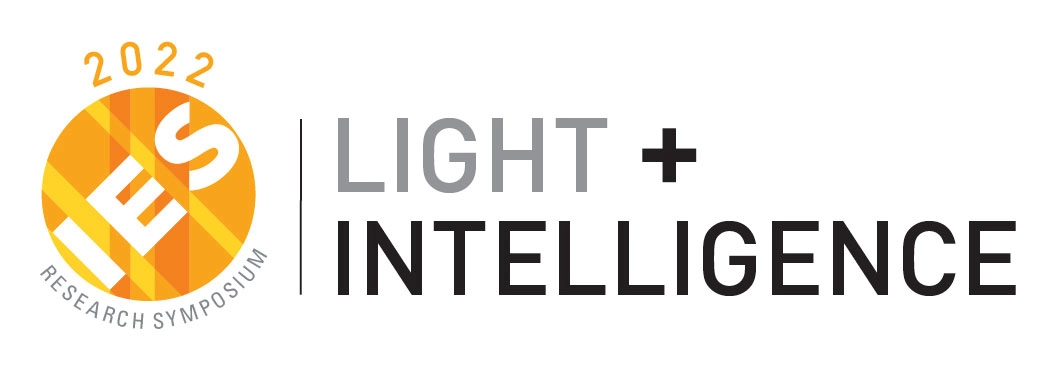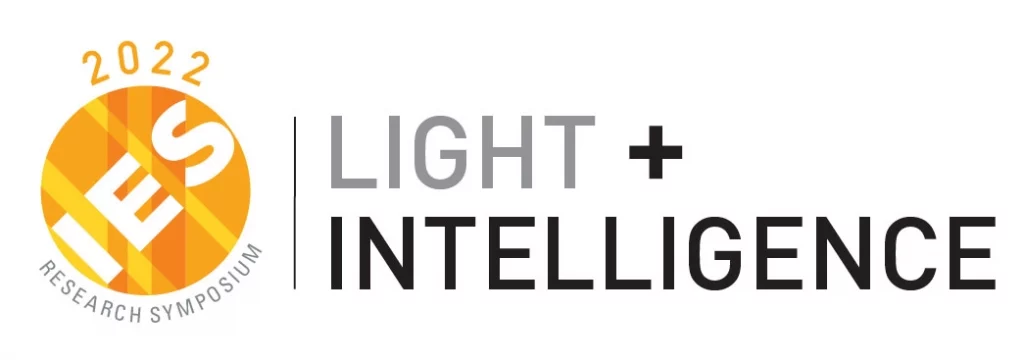Editorial Disclaimer
The views expressed in articles published on FIRES do not necessarily reflect those of IES or represent endorsement by the IES.
By Bob Karlicek
Introduction
About 2,500 years ago, the Greek philosopher Heraclitus postulated that the only constant thing in life is change1. Perhaps this statement is more true today than it ever has been, and indeed, modern pundits would argue that this ancient axiom could be modified to be “accelerating rate of change”2. In almost all professions, it is challenging to stay current with the accelerating evolution of one’s field. This year’s IES Research Symposium (April 10-12, Orlando, Florida) is focusing on Light and Intelligence, examining how developments in simulation and smart buildings, coupled with increasing levels of understanding on lighting for health and wellbeing, are impacting the field of illumination and lighting design.
Ever since the simple light-emitting diode (LED) pulled Illumination into the electronic era, the digitization of Lighting Science initiated an expanding merger of illumination engineering with accelerating changes in other fields that are looking to impact how lighting systems, building systems and cities will evolve. Increasingly, the fields of machine learning (ML) and artificial intelligence (AI) and applications of virtual reality (VR) are intersecting to transform Illumination Engineering.

Orlando Florida | April 10-12, 2022
The 2022 IES Research Symposium on Light and Intelligence brings together experts in research, design, and manufacturing to discuss these innovations and how these emerging fields will transform lighting and lighting design. The topics will include advances in LED technology for new forms of dynamic luminaires and the use of lasers for new types of lighting systems; the latest developments in VR impacting architectural design and the creation of digital twins that are becoming an integral part of smart building design and operation; updates on lighting design for human health and wellbeing; and how the intersection of AI and the Internet of Things (IoT) is creating nearly autonomous building management systems.Practitioners in these various fields will present their latest research and case studies of how rapidly evolving intelligent systems are providing new services and benefits to designers and building occupants.
The 2022 IES Symposium on Light and Intelligence is timely because these emerging technologies promise to dramatically alter the future lighting and lighting design. As is described below, our whole industry is just now seeing the beginning of the changes that will be driven by the integration of light and intelligence; these changes are vast, and their rates of evolution are accelerating!
Lighting Evolution and Converging Arcs of Accelerating Technical Change
Lighting Evolution: At the center of this rapidly accelerating technical change that has transformed illumination is the development of solid-state lighting (SSL), and one could argue that it is the digitization of lighting enabled by the humble LED light source that is subjecting the fields of lighting science, engineering and design to a high rate of technological change. While the semiconductor inventor of the first visible-light-emitting LED (Holonyak) envisioned in the 1960s that the LED would become the ultimate electric (electronic) light source3, the critical breakthrough for SSL was the development of a practical blue LED, which in quickly led to a phosphor-converted white LED in the 1990s, and a recommendation from Sandia National Laboratories that the federal government launch a national program to develop SSL4, though similar programs were already underway in Japan5.
Initially, the appearance of SSL as an increasingly energy efficient electronic illumination platform led researchers and lighting companies to trumpet the dawn of “smart lighting” in the mid-2000s6. However, as with many emergent technologies, smart lighting was a “solution looking for a problem” – the only immediately relevant problem was the inefficiency of incumbent lighting sources. As SSL energy efficiency and, more gradually, luminance and color quality improved, SSL essentially shut down incumbent incandescent bulb and fluorescent tube industries and challenged the energy-saving value of lighting control systems. While SSL has become the preferred lighting source for just about any indoor or outdoor illumination application7, today’s lighting systems cannot really be considered smart in and of themselves. Instead, Light and Intelligence involves the convergence of broader areas of intelligent design, and SSL and SSL control systems have become just one small element in an increasingly complex world of “smart systems.” These evolving intelligent technologies are somewhat arbitrarily grouped into the following two categories.
(1) Building Information Management (BIM), Digital Twins and Virtual Reality (VR): Like visible-light LEDs, BIM platforms started to emerge in the early 1960s8. Here, a group of rapidly converging technologies that have been developing over a half century or more are briefly described, as they are beginning to intersect the illumination design space in several important ways. BIM technology is widely used for building engineering and construction because the building industry needed a consistent and sharable database to help manage design, scheduling, pricing and integration of various building systems operations. Since its emergence, BIM has been integrated with rapidly evolving computer aided design (CAD) tools, and more recently, with VR tools to create Digital Twins that allow for virtual manipulation and examination of all aspects of a building’s design and internal systems, originally on video monitors in 2D. Today, there are many rendering and modeling tools (too many to describe here) used by architects to design buildings, and these tools frequently incorporate lighting and daylighting software modules.
An associated converging technology that is being positioned to impact both building and lighting design is VR, which actually has a much longer development history than SSL or BIM9. VR platforms have quickly evolved, paralleling the evolution of video gaming engines (e.g., Unity, Unreal Engine, others) where improvements in computer graphics, display technology and head mounted displays, have made huge strides in creating dynamic, photo-realistic images for the video game industry. Naturally, this evolution can be integrated with BIM and is increasingly being applied to lighting design10, 11, 12, 13. Very recently, new 3D rendering tools are emerging that use fundamental lighting design concepts (ray tracing, color, illuminance and shadowing) to convert a set of photographs of a space to a photorealistic 3D rendering14.
(2) IoT, Machine Learning and Artificial Intelligence: Concurrent with SSL moving illumination and lighting design into the realm of digital electronics, lighting systems are increasingly getting new roles to play as participants in the emerging Artificial Intelligence of Things (AIoT, a marriage of IoT and machine learning and artificial intelligence, or ML/AI). Over the past years, there have been several reviews of how the development of IoT would be impacting the lighting community15, 16, 17, but the accelerating convergence of ML/AI with massive IoT data pools is rapidly changing the landscape. The marriage of IoT and ML/AI is natural, as the value of ML/AI systems requires huge volumes of data that can be analyzed by increasingly complex algorithms that extract knowledge from these data, and this knowledge can be used to control complex systems.
In one early example, a WeWork research team fed an artificial neural network ML/AI algorithm the number of meeting rooms, their layouts and sizes (BIM data), and reservation frequency to learn the relationship between layout and usage. According to WeWork, the neural network algorithm they used is 40% more accurate than human designers in predicting the meeting room usage by the building occupants. This has implications for the future – the space will be designed based on high-accuracy predictions of how people use conference rooms, to meet the needs of the occupants before beginning of the construction18.
Light and Intelligence: Rapidly evolving AIoT capabilities are just now starting to digest the growing amounts of data from building systems and people-sensing systems (occupancy and occupant tracking, daylighting, temperature and humidity, vibration, water flow, and patterns of WiFi signal use, reflection and absorption, social media data, human biometrics, etc.) to provide comprehensive building and even urban management solutions that, like the simple WeWork example, augment human designer and manager capabilities for a wide variety of building design and management processes. Of course, the end goal of all of these AIoT pursuits is to generate a return on investment by striving to create a better quality of life for larger segments of society. Light and lighting are keys to human quality of life and wellbeing, even as their implementation is being transformed by these converging arcs of new technology. The 2022 IES Symposium on Light and Intelligence will give attendees a high-level overview of how these nascent technologies are being applied today, and will provide a glimpse of how intelligence and its application in lighting and architecture will impact the future of lighting design even more than the invention of the LED about a half century ago.
The author would like to acknowledge the assistance and materials provided by Dr. Yulia Tyukhova in support of the drafting of this short article.
References:
- 1 https://www.worldhistory.org/Heraclitus_of_Ephesos/
- 2 Friedman, T. L. (2017). Thank you for being late: An optimist’s guide to thriving in the age of accelerations (Version 2.0, With a New Afterword). Picador USA.
- 3 https://www.ge.com/news/press-releases/led-inventor-nick-holonyak-reflects-discovery-50-years-later-0
- 4 Haitz, R., Kish, F., Tsao, J., & Nelson, J. (1999). The case for a national research program on semiconductor lighting. Optoelectronics Industry Development Association, 1-24.
- 5 Translation of early Japanese SSL R&D Program Developments, see https://www.sandia.gov/app/uploads/sites/153/2021/12/L21C.pdf
- 6 https://phys.org/news/2005-05-energy-efficient-smart-solid-state.html
- 7 (DOE SSL adoption report)
- 8 https://www.archdaily.com/302490/a-brief-history-of-bim
- 9 https://virtualspeech.com/blog/history-of-vr
- 10 Natephra, W., Motamedi, A., Fukuda, T., & Yabuki, N. (2017). Integrating building information modeling and virtual reality development engines for building indoor lighting design. Visualization in Engineering, 5(1), 1-21.
- 11 Rockcastle paper
- 12 Scorpio, M., Laffi, R., Teimoorzadeh, A., Ciampi, G., Masullo, M., & Sibilio, S. (2022). A calibration methodology for light sources aimed at using immersive virtual reality game engine as a tool for lighting design in buildings. Journal of Building Engineering, 103998.
- 13 Scorpio, M., Laffi, R., Teimoorzadeh, A., & Sibilio, S. (2021, November). Immersive virtual reality as a tool for lighting design: applications and opportunities. In Journal of Physics: Conference Series(Vol. 2042, No. 1, p. 012125). IOP Publishing
- 14 https://www.theverge.com/2022/3/25/22996130/nvidia-instant-nerf-demo-ai-render-3d-scenes-2d-photos
- 15 https://www.ies.org/lda/the-collision-of-lighting-design-with-iot/
- 16 https://integratedlightingcampaign.energy.gov/sites/default/files/2020-03/IoT_Capabilities_Report_FINAL.pdf
- 17 https://betterbuildingssolutioncenter.energy.gov/sites/default/files/attachments/IoT-Upgradeable%20Lighting%20Challenge%20Fact%20Sheet.pdf
- 18 https://www.wework.com/ideas/research-insights/designing-with-machine-learning


